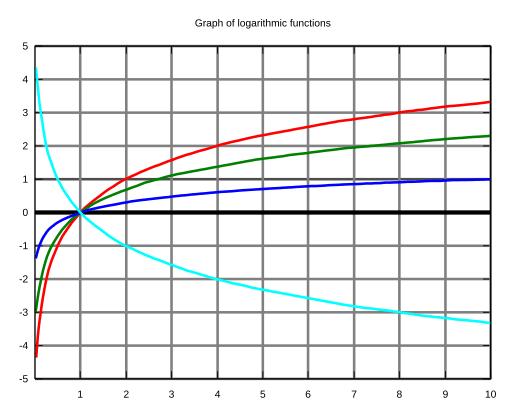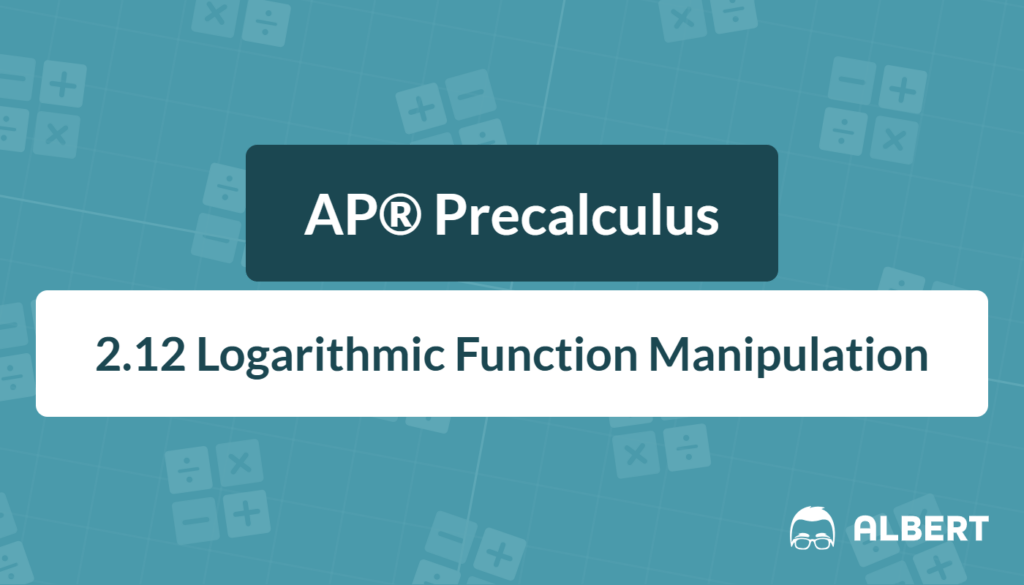What We Review
Introduction
Logarithms are key players in the math world, especially when dealing with exponential functions. Understanding their properties is crucial for mastering topics in AP® Precalculus. Logarithms help simplify complex multiplication and division processes with large numbers, making tough problems more manageable. Therefore, it is essential to learn 2.12 logarithmic function manipulation and the various properties of logarithms to excel in the subject.
Understanding Logarithmic Functions
A logarithmic function is the inverse of an exponential function. In simpler terms, while an exponential function involves multiplying a number by itself multiple times, a logarithmic function asks how many times a number must be multiplied to reach another number.
Mathematically, if b^y = x, then \log_b x = y. Here, b is the base, x is the result, and y tells how many times the base multiplies itself to get x.
The Product Property of Logarithms
The product property states that the logarithm of a product is the sum of the logarithms of its factors. It’s like breaking down a big sum into smaller, manageable parts.
Formula
\log_b (xy) = \log_b x + \log_b y
Example
Let’s say, find \log_2 (32 \times 4).
Step-by-step Solution:
- Break down the product: 32 \times 4 is 128, but using the property, we’ll keep it in parts.
- Apply the product property: \log_2 (32 \times 4) = \log_2 32 + \log_2 4
- Solve the individual logarithms: \log_2 32 = 5 \text { since } (2^5 = 32) , \log_2 4 = 2 \text { since } (2^2 = 4)
- Add the results together: 5 + 2 = 7
Therefore, \log_2 (32 \times 4) = 7.
Practice Problem: Find \log_3 (9 \times 27). Answer: 5
The Power Property of Logarithms
The power property of logarithms is perfect when it involves numbers raised to a power. It helps rip apart powers with ease.
Formula
\log_b (x^n) = n \log_b x
Example
Calculate \log_5 (125^3).
Step-by-step Solution:
- Identify the components: Recognize 125 can be rewritten as 5^3.
- Apply the power property of logarithms: \log_5 (125^3) = 3 \log_5 125 \rightarrow 125 = 5^3 \text{, so } \log_5 125 = 3
- Calculate the final value: 3 \times 3 = 9
So, \log_5 (125^3) = 9.
Practice Problem: Determine \log_2 (16^4). Answer: 16 .
The Change of Base Property of Logarithms
Sometimes, solving logarithms is easier by changing the base. This property allows conversion to a different, sometimes more familiar, base.
Formula
\log_b x = \frac{\log_a x}{\log_a b}
Example
Find \log_2 81 using base 10.
Step-by-step Solution:
- Use the change of base formula: \log_2 81 = \frac{\log_{10} 81}{\log_{10} 2}
- Calculate the values (usually using a calculator): \log_{10} 81 \approx 1.908 \text{ and } \log_{10} 2 \approx 0.301
- Perform division: \frac{1.908}{0.301} \approx 6.339
So, \log_2 81 \approx 6.339.
Practice Problem: Calculate \log_3 50 using base 10. Answer: \approx 3.561

Graphical Effects of Logarithmic Properties
Logarithmic functions have distinct curves with vertical asymptotes at x = 0. Understanding how logarithmic properties affect graphs helps visualize transformations.
Product Property: Horizontal Dilations as Vertical Shifts
The product property states: \log_b (xy) = \log_b x + \log_b y
This implies that multiplying the input by a constant k results in a vertical shift:
\log_b (kx) = \log_b k + \log_b x
Graphically, compressing or stretching the input horizontally corresponds to a vertical translation by \log_b k, while the vertical asymptote remains at x = 0.
Power Property: Vertical Dilations
The power property states: \log_b (x^n) = n \log_b x
Raising the input to a power n scales the function vertically by n. If n > 1, the graph stretches, and if 0 < n < 1, it compresses.
Change of Base Property: All Logarithms as Vertical Dilations
The change of base formula, \log_b x = \frac{\log_a x}{\log_a b},
shows that all logarithmic functions are vertical dilations of each other. The base affects the graph’s steepness but does not change the vertical asymptote.
Helpful Tips for Logarithmic Manipulation
- Practice frequently: Regular practice helps familiarize logarithmic manipulations.
- Break down complex expressions: Use properties to simplify into manageable terms.
- Double-check work: Verify solutions using different properties to ensure accuracy.
Quick Reference Chart of Logarithmic Properties
| Term | Definition / Formula |
| Logarithmic Function | \log_b x = y , \text{if} , b^y = x |
| Product Property | \log_b (xy) = \log_b x + \log_b y |
| Power Property | \log_b (x^n) = n \log_b x |
| Change of Base Property | \log_b x = \frac{\log_a x}{\log_a b} |
Conclusion
In conclusion, mastering logarithmic properties is crucial for success in AP® Precalculus. Regular practice will strengthen understanding and boost confidence. Remember, these properties make handling exponential functions simpler and are vital for solving many mathematical problems.
Sharpen Your Skills for AP® Precalculus
Are you preparing for the AP® Precalculus exam? We’ve got you covered! Try our review articles designed to help you confidently tackle real-world math problems. You’ll find everything you need to succeed, from quick tips to detailed strategies. Start exploring now!
Need help preparing for your AP® Precalculus exam?
Albert has hundreds of AP® Precalculus practice questions, free responses, and an AP® Precalculus practice test to try out.









